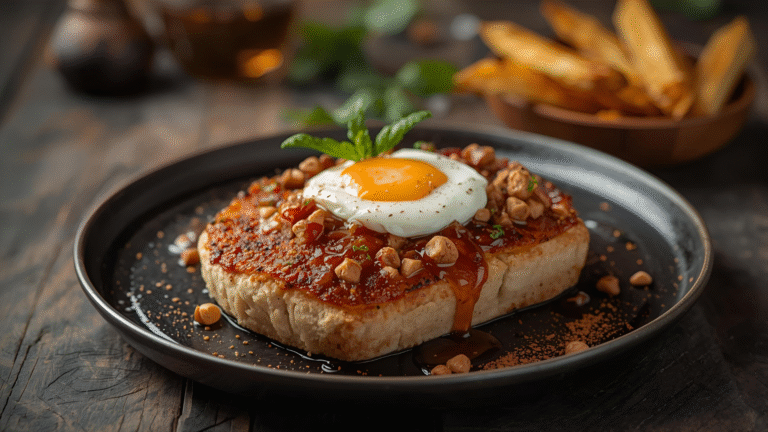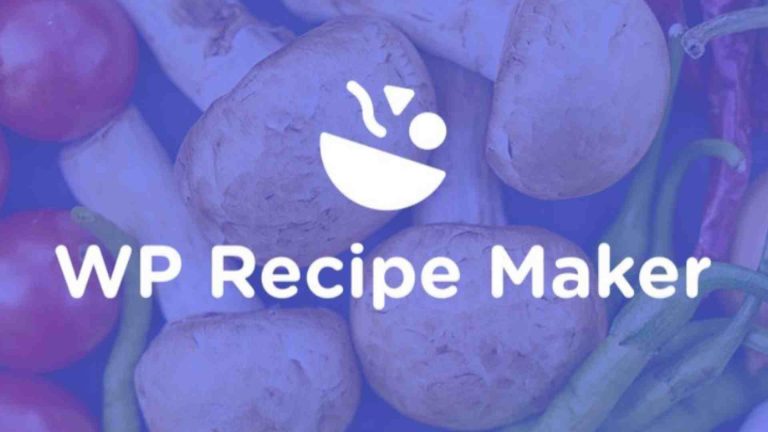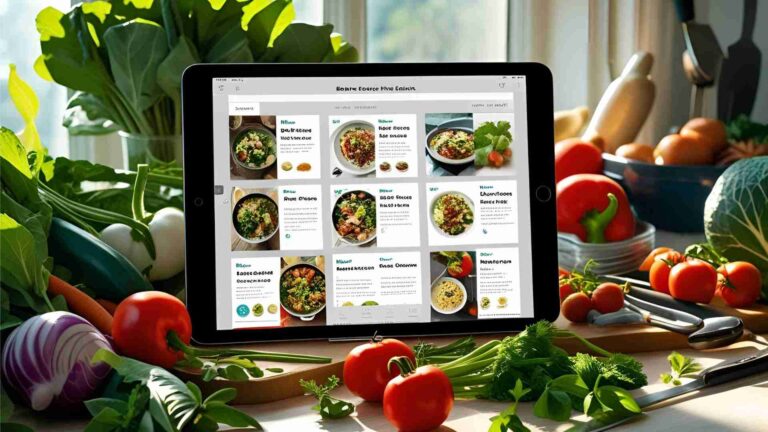Writing for a Niche & Adding in Non-Recipe Content
Food blogging is a vibrant and competitive space where creators share their culinary passions with a global audience. Choosing a niche—whether it’s vegan desserts, French cuisine, or budget-friendly meals—gives your blog a distinct identity and attracts a dedicated readership. However, writing for a niche goes beyond crafting recipes. To truly stand out, food bloggers must develop a strategic content plan that includes both recipe-driven posts and engaging non-recipe content. This comprehensive guide explores how to write effectively for a niche, incorporate diverse non-recipe content, and leverage tools like WP Recipe Maker to optimize your food blog for both readers and search engines.
Why Writing for a Niche Matters
A niche defines your blog’s focus and helps you connect with a specific audience. Whether you’re just starting or looking to refine your brand, aligning your content with your niche is crucial for establishing authority and building trust. For example, if your niche is gluten-free baking, your readers expect recipes, tips, and insights tailored to that focus. Straying too far from your niche—say, posting a meat-heavy recipe on a vegan blog—can confuse your audience and dilute your brand.
Benefits of a Well-Defined Niche
- Audience Clarity: A niche communicates exactly what readers can expect, making it easier to attract and retain a loyal following.
- Authority Building: Consistent, niche-specific content positions you as an expert in your field.
- SEO Advantage: Targeting specific keywords related to your niche can improve your blog’s visibility on search engines like Google.
- Content Focus: A niche provides a framework for brainstorming ideas, reducing the risk of writer’s block.
To maximize these benefits, your content strategy should cover all key aspects of your niche while incorporating a mix of recipe and non-recipe posts. Let’s dive into how to achieve this balance.
Crafting Niche-Specific Recipe Content
Recipes are the heart of any food blog, and they should reflect your niche’s core themes. When developing recipes, aim to be thorough, authoritative, and engaging. Here’s how to approach recipe creation within your niche:
1. Cover All Key Categories
Ensure your blog addresses the most important subcategories within your niche. For example, a vegan dessert blog might include:
- Cookies
- Cakes
- Pies
- Ice creams
- No-bake treats
By offering a comprehensive range of recipes, you meet your readers’ expectations and increase the likelihood they’ll return to your site. Use a content calendar to plan recipes systematically, ensuring you cover seasonal trends, holidays, and reader preferences.
2. Establish Expertise
Your recipes should showcase your knowledge and creativity. For instance, if your niche is French cuisine, include detailed instructions for techniques like making a roux or perfecting a soufflé. Share tips, ingredient substitutions, and troubleshooting advice to demonstrate your expertise. High-quality food photography and step-by-step visuals further enhance your credibility.
3. Optimize for Search Engines
To rank well on Google, optimize your recipe posts with:
- Keyword-Rich Titles: Use specific, niche-relevant keywords like “vegan chocolate chip cookies” or “gluten-free sourdough bread.”
- Structured Data: Tools like WP Recipe Maker automatically add schema markup, helping search engines understand your recipe content and display it in rich snippets.
- Engaging Descriptions: Write vivid, sensory-driven introductions that incorporate keywords naturally. For example, “These chewy vegan brownies are rich with cocoa and studded with dark chocolate chunks, perfect for a guilt-free indulgence.”
4. Use Tools Like WP Recipe Maker
WP Recipe Maker is a powerful WordPress plugin designed to streamline recipe creation and enhance user experience. Key features include:
- Customizable Templates: Choose layouts that match your blog’s aesthetic.
- Nutrition Labels: Automatically generate nutritional information for health-conscious readers.
- Recipe Roundups: Create themed collections, like “10 Vegan Desserts for Summer,” to boost engagement.
- Taxonomies: Tag recipes with dietary information (e.g., gluten-free, nut-free) to improve searchability.
By integrating WP Recipe Maker, you can present recipes in a professional, user-friendly format that encourages readers to explore more of your content.
Incorporating Non-Recipe Content
While recipes are essential, non-recipe content adds depth to your blog, showcases your personality, and attracts a broader audience. Non-recipe posts allow you to explore your niche from different angles, from cultural insights to practical tips. Here are some ideas for non-recipe content, along with strategies to make them effective:
1. Travel Guides
If your niche has a cultural or regional focus, travel guides can enrich your content. For example, a French food blog could feature a guide to Parisian patisseries or Provençal markets. Include:
- Recommendations for authentic dining experiences.
- Tips for sourcing niche-specific ingredients abroad.
- Vivid descriptions and high-quality photos to inspire wanderlust.
Example: A post titled “Finding the Best Vegan Eats in Tokyo” could highlight plant-based restaurants, local ingredients, and cultural dining etiquette.
2. Technique Tutorials
Share your culinary expertise through detailed how-to guides. For instance, a bread-baking blog might publish a tutorial on “How to Shape a Perfect Sourdough Boule.” Include:
- Step-by-step instructions with photos or videos.
- Hacks for beginners and advanced tips for seasoned cooks.
- Common mistakes to avoid.
Chart: Visualizing the Bread-Shaping Process

3. Ingredient Spotlights
Educate readers about key ingredients in your niche. For example, a superfood blog could spotlight chia seeds, covering:
- Nutritional benefits.
- Creative uses in recipes.
- Sourcing and storage tips.
Table: Common Superfood Ingredients
| Ingredient | Benefits | Recipe Ideas |
|---|---|---|
| Chia Seeds | High in fiber, omega-3s | Puddings, smoothies |
| Quinoa | Complete protein | Salads, bowls |
| Acai Berries | Antioxidant-rich | Smoothie bowls, desserts |
4. Restaurant Reviews
Reviewing restaurants related to your niche adds variety and supports local businesses. For a vegan blog, you might review plant-based eateries in your city. Include:
- Insights on menu offerings, ambiance, and service.
- Photos of dishes to entice readers.
- SEO-friendly keywords like “best vegan restaurants in [city].”
5. Eco-Friendly Cooking Tips
Appeal to environmentally conscious readers with tips on sustainable cooking. Ideas include:
- Meal planning to reduce food waste.
- Using plant-based proteins to lower environmental impact.
- Repurposing leftovers into new dishes.
Example: A post titled “12 Ways to Cook More Sustainably” could feature practical advice backed by research, such as Accenture’s finding that over two-thirds of Gen Z consumers prefer eco-friendly products.
6. Kitchen Tool Guides
Share your favorite tools to help readers elevate their cooking. For example, a baking blog could publish a post on “10 Essential Tools for Perfect Cakes.” Include:
- Product descriptions and personal experiences.
- Affiliate links for monetization.
- High-quality images of tools in action.
Table: Essential Baking Tools
| Tool | Purpose | Approx. Price (USD) |
|---|---|---|
| Stand Mixer | Mixing doughs, batters | $200–$400 |
| Digital Scale | Precise measurements | $20–$50 |
| Offset Spatula | Smooth frosting | $5–$15 |
7. Lifestyle and Personal Stories
Connect with readers by sharing personal anecdotes. For example, a post about “My Journey to Vegan Baking” could detail your motivations and challenges. Use storytelling to:
- Build relatability.
- Highlight your niche’s relevance.
- Encourage reader engagement through comments or social media.
8. Holiday and Seasonal Content
Capitalize on holidays and seasons to create timely content. For a gluten-free blog, you might publish “10 Gluten-Free Thanksgiving Desserts.” Include:
- Recipes tailored to the occasion.
- Tips for hosting or gifting.
- Festive visuals to boost engagement.
Leveraging Search Engines for Content Ideas
Search engines like Google are goldmines for content inspiration. The “People Also Ask” section reveals what your audience is curious about. For example, searching “vegan dessert recipe” might yield questions like:
- “What are the best vegan substitutes for eggs?”
- “How do you make vegan desserts without refined sugar?”
Use these questions to craft non-recipe posts that address reader pain points. Additionally, tools like Google Trends can help you identify trending topics, such as “air fryer recipes” or “plant-based proteins,” ensuring your content stays relevant.
Monetizing Non-Recipe Content
Non-recipe content offers opportunities to monetize your blog through affiliate marketing and sponsored posts. Here’s how:
- Affiliate Links: Recommend products like kitchen gadgets or ingredients and earn commissions on purchases. For example, link to a high-quality blender in a smoothie recipe post.
- Sponsored Posts: Partner with brands to create content that aligns with your niche, such as a review of a vegan protein powder.
- WP Recipe Maker Features: Use the plugin’s ingredient and equipment link features to seamlessly integrate affiliate links into recipes.
Always disclose affiliate relationships to maintain transparency and trust with your audience.
Engaging Your Audience
Engagement is key to building a loyal readership. Incorporate these strategies into your non-recipe content:
- Ask Questions: End posts with prompts like “What’s your favorite vegan dessert?” to spark discussion.
- Feature Readers: Share reader-submitted photos of your recipes or highlight their cooking stories.
- Social Media: Promote non-recipe content on platforms like Instagram with captivating visuals and captions. For example, a post about eco-friendly cooking could include a poll asking followers about their sustainability habits.
The Role of Regular Posting
Consistency is critical for food blog success. Studies show that bloggers who post 2–6 times per week are 50% more likely to see strong results. To maintain a regular schedule:
- Plan Ahead: Use a content calendar to map out recipe and non-recipe posts.
- Batch Content: Create multiple posts in one session to save time.
- Analyze Engagement: Track which topics resonate most with readers using analytics tools like Google Analytics.
WP Recipe Maker: A Game-Changer for Food Bloggers
WP Recipe Maker deserves special mention for its role in elevating food blogs. Beyond recipe presentation, it offers:
- Video Integration: Embed recipe videos from YouTube or Vimeo to enhance engagement.
- SEO Optimization: Automatically adds structured data for better search visibility.
- User-Friendly Features: Allows readers to adjust serving sizes or save recipes to their devices.
Pricing:
- Free Version: Basic recipe management and templates.
- Premium Version: $49/year for advanced features like nutrition labels and video integration.
By using WP Recipe Maker, you can focus on creating content while the plugin handles technical details.
Inspiration from Top Food Blogs
Studying successful food blogs can spark ideas for your own content. Here are five standout examples:
- Smitten Kitchen: Focuses on simple, approachable recipes with engaging storytelling.
- The Prenatal Nutritionist: Specializes in pregnancy-friendly meals, offering niche-specific advice.
- Cooking With Cocktail Rings: Combines recipes with lifestyle and travel content.
- The Emerald Palate: Blends food with travel and cultural exploration.
- The Healthy Hippie: Integrates healthy eating with fitness and lifestyle tips.
Analyze their content mix, photography, and engagement strategies to refine your approach.
Overcoming Writer’s Block
Writer’s block is a common challenge for food bloggers. Combat it by:
- Exploring New Formats: Try video recipes, GIFs, or listicles.
- Collaborating: Partner with other bloggers for recipe swaps or interviews.
- Revisiting Old Content: Update outdated posts with new photos or insights.
- Using Prompts: Tools like ChatGPT can generate ideas, such as “List 10 unique vegan dessert recipes” or “Describe the flavor of a summer peach tart.”
Conclusion
Writing for a niche and adding non-recipe content is a powerful strategy for food bloggers looking to grow their audience and establish authority. By crafting comprehensive recipe posts, incorporating diverse non-recipe content, and leveraging tools like WP Recipe Maker, you can create a blog that’s both engaging and profitable. Use search engines, analytics, and reader feedback to guide your content strategy, and stay consistent with regular posting to keep your audience coming back for more. With creativity and planning, your food blog can become a go-to resource in your niche, delighting readers with every post.
Please share this Writing for a Niche & Adding in Non-Recipe Content with your friends and do a comment below about your feedback.
We will meet you on next article.
Until you can read, How to Rank in Google’s Recipes SERP Feature






